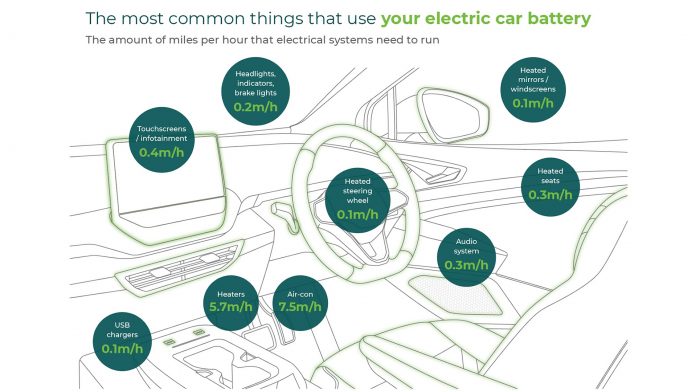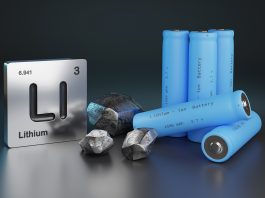A new study by GRIDSERVE has analysed several factors and how these could be causing a draining EV battery.
Several factors could cause a draining EV battery, but with above-average temperatures predicted for June, air conditioning could be a huge contributor.
Using a combination of live vehicle data, manufacturer tech sheets, and maths, researchers calculated how much energy electrical systems require and converted that into how many miles per hour it’ll use in an electric vehicle (EV).
Due to differences in each car, the team standardised the results by using an average vehicle efficiency – the amount of power needed to travel a certain distance. They used 288 Wh/mile, as this is a fairly average number across all types of cars.
So, what are the most common things that cause a draining EV battery?
Climate control
The biggest cause of a draining EV battery is climate control, such as using heating in winter or air conditioning in summer.
Climate systems typically require around 3-4kW to run, which equates to seven miles of range per hour to run the air-con and five miles per hour to run heaters.
Both front and rear heated screens are also a minor cause of a drained battery. Heated windscreens are much more energy intensive than rear screens but usually have an automatic switch off after a short time to reduce energy demand.
Here’s how much range different climate control settings require:
- Air-con: 7.5 miles/hour;
- Heaters: 5.7m/h;
- Heated seats: 0.3m/h;
- Heated steering wheel: 0.1m/h; and
- Heated windscreen/rear screen/mirrors: 0.1m/h.
Does lighting cause a draining EV battery?
Home electricity bills usually soar in winter; however, lighting’s impact on EV batteries is minimal, fortunately.
Lighting systems, including fog lights, brake lights, or headlights, use a tiny amount of energy – just 0.2 miles per hour.
The impact of on-board tech
Modern cars come with a plethora of technology, such as touchscreens, sound systems, and USB chargers. Does this mean these devices should be switched off as a result of a draining EV battery?
An audio system can use 0.3 miles per hour while an infotainment display uses 0.4 miles per hour. Therefore, if the battery is significantly degraded, switching off any tech items might be a good idea.
A USB charger is of less concern, with a tiny amount of impact on range. However, if several are plugged into one car, you might start to see an impact.
On-board tech impacts range as follows:
- Audio system: 0.3m/h;
- Infotainment display: 0.4m/h; and
- USB charger: 0.1m/h.
Other electrical systems
Other vehicle electrical systems include windscreen wipers, central locking, remote connectivity, and ABS.
All of these can cause a draining EV battery; however, they are very small in terms of range impact. Despite this, when everything is added up, including the heating or cooling systems, lighting and entertainment systems, they’ll require over 5kW of power to run – equal to around ten miles per hour.
How does temperature impact EV batteries?
Freezing cold temperatures may show a reduced battery range. This is because an EV battery chemistry becomes sluggish during cold bouts of weather, and cars need to use energy to heat the battery up.
To prevent a draining EV battery, it’s important to consider pre-conditioning and selecting a heat pump as an option on any new vehicle.
Not only do these sufficiently heat the vehicle, but heat pumps mean the battery won’t be used to heat the car when driving. Overall, heat pumps are a great option for maximising EV range and are 10% more efficient than a traditional heater.
How can EV range be maximised?
Considering all the factors that cause a degrading EV battery, you can take several measures to add range to your EV.
One way to claim back battery life is with regenerative braking. This works by recovering some of the kinetic energy lost as the car slows down and pumps it back into the cells, resulting in added range.
It’s estimated that regenerative braking on average can add around 20% in range. That means over a 100 miles journey, you’ll reclaim about 20 miles.
Another factor that could slow down a degrading EV battery is making small adjustments to your speed.
GRIDSERVE data shows that EV range increases exponentially when making small changes at higher speeds. For example, over an hour long journey, you’ll use 13% less energy driving at 60mph compared to 70mph – equal to roughly six miles of range per hour.
The number of miles you’ll get from an EV battery can alter on any given day due to conditions outside and how you drive. However, considering these factors may help increase your battery’s range and prevent premature degradation.









